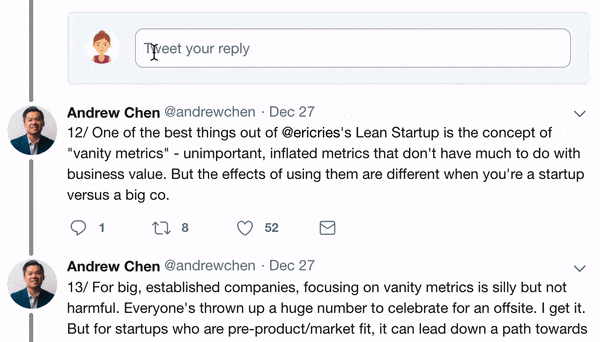
1/🧵
Leverage can be a powerful tool during good times but a devil in disguise during bad ones.
Given its recent popularity, in this thread we look at MARGIN DEBT, its statistics, and predictive power on what future might hold.
Best enjoyed with a cup of tea 🫖
Leverage can be a powerful tool during good times but a devil in disguise during bad ones.
Given its recent popularity, in this thread we look at MARGIN DEBT, its statistics, and predictive power on what future might hold.
Best enjoyed with a cup of tea 🫖
2/🧵
To cover the basics first, margin debt is the amount of money an investor borrows from the broker via a margin account.
The more there is margin debt, the more leverage is being used to own stocks with borrowed money that must be repaid at some point in time.
To cover the basics first, margin debt is the amount of money an investor borrows from the broker via a margin account.
The more there is margin debt, the more leverage is being used to own stocks with borrowed money that must be repaid at some point in time.
3/🧵
Imagine there's no margin debt, and it goes up by +$100 bln. All else equal, there’s $100 bln of additional capital chasing stocks, i.e. more liquidity.
When the reverse is true, margin debt -$100 bln, liquidity chasing stocks dries up by that amount, i.e. less liquidity.
Imagine there's no margin debt, and it goes up by +$100 bln. All else equal, there’s $100 bln of additional capital chasing stocks, i.e. more liquidity.
When the reverse is true, margin debt -$100 bln, liquidity chasing stocks dries up by that amount, i.e. less liquidity.
4/🧵
FINRA, Financial Industry Regulatory Authority, is kind enough to disclose monthly statistics for these figures.
We are using this data here and it can be found from the link below for Jan’1997 to Jul’2021 (updated just last week).
finra.org/investors/lear…
FINRA, Financial Industry Regulatory Authority, is kind enough to disclose monthly statistics for these figures.
We are using this data here and it can be found from the link below for Jan’1997 to Jul’2021 (updated just last week).
finra.org/investors/lear…
5/🧵
We can see that the earlier peaks of margin debt took place Mar’2000 and Jun’2007, growing erratically to this day.
Since margin debt naturally grows with the size of the overall market, it may make sense to track “the speed of change”, not absolute numbers.
We can see that the earlier peaks of margin debt took place Mar’2000 and Jun’2007, growing erratically to this day.
Since margin debt naturally grows with the size of the overall market, it may make sense to track “the speed of change”, not absolute numbers.

6/🧵
By looking at the year-on-year (YoY) change of margin debt, we get an interesting “oscillator” showing the added liquidity from the margin debt being put to market and out from it.
It's to some extent putting a real number on the emotional state of the investment crowd.
By looking at the year-on-year (YoY) change of margin debt, we get an interesting “oscillator” showing the added liquidity from the margin debt being put to market and out from it.
It's to some extent putting a real number on the emotional state of the investment crowd.

7/🧵
To make this “oscillator” more descriptive, we can recreate it by using percentage change instead of BUSD change.
As market size and the related margin debt increase, these results should be expected to be historically more comparative.
To make this “oscillator” more descriptive, we can recreate it by using percentage change instead of BUSD change.
As market size and the related margin debt increase, these results should be expected to be historically more comparative.
8/🧵
There’s still a lot of “noise of normal variation” but looking at the extremes through the lens of margin debt, 60% YoY growth has been ominously reached thrice:
2000, 2007, and 2021
YoY contraction of more than 40% has been reached twice:
2001-2002, 2009
There’s still a lot of “noise of normal variation” but looking at the extremes through the lens of margin debt, 60% YoY growth has been ominously reached thrice:
2000, 2007, and 2021
YoY contraction of more than 40% has been reached twice:
2001-2002, 2009

9/🧵
Could these fluctuations in “marginal buyer’s gunpowder” be helpful in determining market moves?
Here YoY margin debt changes (x) are plotted against 12m forward Nasdaq returns (y).
Note that 12m forward returns have not been positive when margin debt change been > 50%.
Could these fluctuations in “marginal buyer’s gunpowder” be helpful in determining market moves?
Here YoY margin debt changes (x) are plotted against 12m forward Nasdaq returns (y).
Note that 12m forward returns have not been positive when margin debt change been > 50%.

10/🧵
Here we plot the same data differently.
It now becomes clear how ominous the decline from the highest debt peaks (in 2000 and 2007) have been for future market returns.
And it makes sense; marginal buyers pull out liquidity by reducing debt. Buying power disappears.
Here we plot the same data differently.
It now becomes clear how ominous the decline from the highest debt peaks (in 2000 and 2007) have been for future market returns.
And it makes sense; marginal buyers pull out liquidity by reducing debt. Buying power disappears.

11/🧵
The “band of normalcy” is wide, but this helps with caution in the absolute extremes, while providing sound logic for the act.
With an investment horizon of min. 2+ years, this also provides valuable support when turning increasingly aggressive (e.g. YoY margin < -20%).
The “band of normalcy” is wide, but this helps with caution in the absolute extremes, while providing sound logic for the act.
With an investment horizon of min. 2+ years, this also provides valuable support when turning increasingly aggressive (e.g. YoY margin < -20%).

12/🧵
The reason I’m writing about this now is because July 2021 was the first month since the start of the Covid-19 rally the margin debt has had an absolute decline, dropping from $882 bln to $844 bln (-$38 bln).
It seems margin debt played a major role in the rally.
The reason I’m writing about this now is because July 2021 was the first month since the start of the Covid-19 rally the margin debt has had an absolute decline, dropping from $882 bln to $844 bln (-$38 bln).
It seems margin debt played a major role in the rally.

13/🧵
I wasn’t the only one noticing.
My Finnish followers may find the recent @Vernepu (of @Inderes) video interesting where this topic was addressed.
Check it out if you haven’t already.
I wasn’t the only one noticing.
My Finnish followers may find the recent @Vernepu (of @Inderes) video interesting where this topic was addressed.
Check it out if you haven’t already.
14/🧵
Also, the beautiful and always up-to-date graphs by Yardeni Research are worth browsing through monthly.
yardeni.com/pub/stmkteqmar…
Also, the beautiful and always up-to-date graphs by Yardeni Research are worth browsing through monthly.
yardeni.com/pub/stmkteqmar…

15/🧵
All this might mean nothing, but historical references do warrant some caution.
As I’ve described earlier, when it comes to stock markets, there are no certainties – only odds.
No one knows.
All this might mean nothing, but historical references do warrant some caution.
As I’ve described earlier, when it comes to stock markets, there are no certainties – only odds.
No one knows.
https://twitter.com/hkeskiva/status/1406167270301356034?s=20
16/🧵
The ugly truth about margin debt is that when the masses start to roll it back, that’s done in a hurry and eventually against one’s own will, accelerating the negative cycle even further.
Don’t be the last one - large margin debt is always best to unwind before others.
The ugly truth about margin debt is that when the masses start to roll it back, that’s done in a hurry and eventually against one’s own will, accelerating the negative cycle even further.
Don’t be the last one - large margin debt is always best to unwind before others.
17/🧵
If you wish to play around with the numbers, you may find all the data used in this thread from the following Google Sheets.
docs.google.com/spreadsheets/d…
If you wish to play around with the numbers, you may find all the data used in this thread from the following Google Sheets.
docs.google.com/spreadsheets/d…
18/🧵
Thanks for sticking with me this far!
If you found this look at MARGIN DEBT interesting, please hit a follow for @hkeskiva.
For more similar writings, check out all my previous threads:
Wishing you a nice weekend 😊
Be safe out there!
Thanks for sticking with me this far!
If you found this look at MARGIN DEBT interesting, please hit a follow for @hkeskiva.
For more similar writings, check out all my previous threads:
https://twitter.com/hkeskiva/status/1393471303890477056?s=20
Wishing you a nice weekend 😊
Be safe out there!
19/🧵
Oh, forgot one thing.
If we push the Nasdaq returns forward by 12 months, we see how strong of a correlation there is between the realized changes of margin debt and Nasdaq moves.
Not surprisingly, there's a tight link between the two.

Oh, forgot one thing.
If we push the Nasdaq returns forward by 12 months, we see how strong of a correlation there is between the realized changes of margin debt and Nasdaq moves.
Not surprisingly, there's a tight link between the two.


• • •
Missing some Tweet in this thread? You can try to
force a refresh









